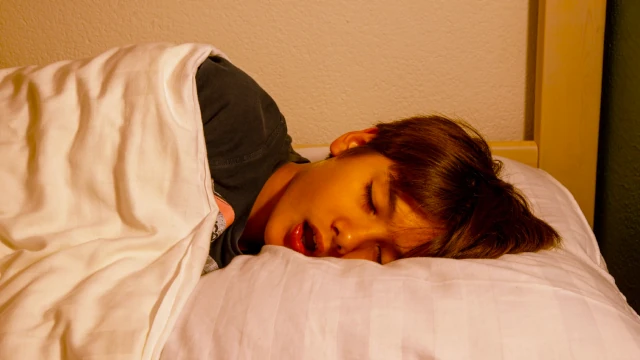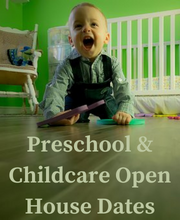As parents, we’re often the first to notice when something might need attention – posture, speech, or a stubborn baby tooth. Our child’s teeth are no different. While every smile is beautiful and unique, there are some signs that might suggest your child could benefit from braces or clear aligners in the future. Being aware of these early signs can better prepare you in supporting your child’s oral health journey.
Not every issue needs immediate intervention – many resolve as your child grows. But early awareness can make all the difference in knowing when to consult your family dentist.
 Image provided by Zenyum
Image provided by Zenyum
Six common signs to look out for
You don’t need a medical degree to spot when something’s off. These signs often appear during brushing, talking, or even sleeping. Here are some early indicators:
1. Crowded or Overlapping Teeth
As adult teeth emerge, there may not be enough room in the mouth. This can lead to crowding, twisting, or teeth coming in at odd angles – especially in the front.
What to look for:
- Teeth that seem ‘stacked’ or ‘squeezed’ together
- Difficulty flossing
- Complaints of pressure as new teeth come in
Crowding makes brushing and flossing difficult, raising the risk of cavities. It can also be a sign that the teeth are just too large for the available jaw space. If you notice this, a dentist can advise if early assessment is needed.
 Image provided by Zenyum
Image provided by Zenyum
2. Premature or Late Loss of Baby Teeth
Baby teeth guide adult teeth into position. Most kids lose them between ages 6 to 12. If a tooth falls out too early or hangs on too long, it may affect how adult teeth grow – leading to crowding or misalignment in the future.
3. Prolonged Pacifier Use, Bottle Feeding or Thumb-Sucking
These habits are normal in early years, but if they continue past age 4, they can affect jaw development and tooth alignment. This can lead to an “open bite,” where the front teeth don’t meet when the mouth is closed.
What to watch for:
- Habits like thumb-sucking or pacifier use past age 4
- Front teeth that angle forward or don’t touch
- Gaps between top and bottom front teeth
 Image provided by Zenyum
Image provided by Zenyum
4. Speech That Sounds ‘Off’
Difficulty articulating sounds like “s,” “z,” “th,” or “sh” could be a speech or dental issue. Misaligned teeth and jaws affect tongue placement and airflow, which are key to clear speech.
5. Mouth Breathing, Especially at Night
If your child sleeps with their mouth open, it might point to nasal congestion or bite issues. Chronic mouth breathing can alter jaw and facial growth, resulting in a longer, narrower face or misaligned bite.
Bring this up with your dentist or pediatrician, and they can assess if a specialist followup is required.
 Image provided by Zenyum
Image provided by Zenyum
6. Jaw Clicking or Facial Asymmetry
Clicking when yawning or chewing, or noticeable imbalance in jaw or facial structure, may signal a misaligned bite. Left untreated, this can lead to uneven tooth wear, discomfort while eating, or even headaches.
Why Early Detection Matters
Minor issues can impact more than appearance. Early detection helps address:
- Jaw development: Uneven growth or pressure from misaligned teeth can lead to bite problems.
- Bite alignment: Overbite, underbite, or crossbite can cause discomfort or uneven tooth wear.
- Speech and breathing: Teeth and jaws influence how we speak and breathe.
- Confidence: A misaligned smile may affect a child’s self-esteem as they grow.
When to Start seeing a Dentist
You don’t need to wait until all adult teeth are fully developed. It’s best to take your child to the dentist when their first tooth appears. Early visits help build familiarity and comfort with your dentist, and to help your child establish good oral habits.
According to Dr Tanya Kapoor Shukla, Dental Expert at Zenyum, your child’s first orthodontic visit is recommended around 7 years of age, when your child has a mix of baby and adult teeth. Your orthodontist can advise if early intervention is needed. As children transition into their teenage years, most of their adult teeth would have fully erupted; and this is when alignment or bite issues may become more apparent. Depending on the severity of misalignment of your child’s adult teeth, your dentist may recommend braces or clear aligners to correct the malocclusions at this point.
 Image provided by Zenyum
Image provided by Zenyum
The Importance of Good Daily Oral Hygiene
Healthy teeth are easier to align and maintain during orthodontic treatment. Daily care is foundational:
- Brush twice a day with fluoride toothpaste (Not immediately after meals!)
- Floss daily
- Visit the dentist every 6 months
- Limit sugary snacks and drinks
As your child grows, their smile grows with them – sometimes in unexpected ways. Not every irregularity requires immediate treatment, but staying alert to early signs helps you make informed choices. Orthodontic care doesn’t have to be daunting, but about steady steps toward a confident, healthy smile.
Article contributed by Zenyum. Images provided by Zenyum.
This article is for informational purposes only and is not intended as a substitute for professional dental or medical advice. Always consult with a qualified dental professional for diagnosis and treatment tailored to your specific needs.
* * * * *
Looking to reach over 100,000 parents in Singapore? Let us amplify your message! Drop your contact details here, and we’ll reach out to you.
Discover exciting family-friendly events and places to explore! Join our Telegram channel for curated parenting recommendations.
















































